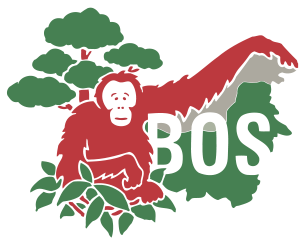Indonesian fires: forget the orangutans, is this the tipping point for climate change?
triplejHack: 5 November 2015: James Purtill
The fires have driven the concentration of carbon in the atmosphere to levels not seen in two million years, experts say.
Twenty four hours after answering a Facebook message, Quentin Johnson, 56, retired fire-fighter, found himself at Sydney airport bound for Singapore.
At his destination the smoke haze was so thick he could barely see two streets. The pollution standards index (PSI) was 340: anything over 300 is considered hazardous to humans. He flew south, to the Indonesian island of Kalimantan, into the what has been described as one of the world’s worst climate disasters, into the source of the smoke haze, where the PSI was a record-high 2,300.
There he could only see 10m in front of him.
“I don’t like how they call it haze,” he says, weeks later, back in Sydney. “It should be called smoke pollution, ecological disaster, for the whole of south-east asia.”
“And because the winds blow north we don’t get it in Australia – we don’t see it.”
The Facebook message had come from Tony Gilding, the Australian president of the Borneo Orangutan Survival Foundation – an NGO with 700 orangutans in its care.
“There were spot fires being lit, and I started to recognise the effects of El Nino,” Tony says of that visit in September.
“I started to get pretty worried.”
“I hate to say perfect storm, but it was a perfect storm.”
Every dry season Indonesia burns.
The fires are typically lit for clearing land and the land is generally used for plantations of oil palms and timber. Palm oil is pretty much everywhere – it’s the most widely used vegetable oil on the planet and is found in roughly half of all packaged products in supermarkets.
This includes Australia. Palm oil puts the shine in dairy milk chocolate and the crunch in Anzac biscuits.
Demand for palm oil is rising. Partly because of this, Indonesia has the highest rate of deforestation in the world (higher than Brazil). There is a presidential decree against burning large tracts, but it is many times cheaper to clear land this way than in the authorised way, and so every dry season more and more land gets burnt.
This year was an El Nino weather system – it was drier and hotter than normal, and the monsoons would come later. The monsoons would extinguish the fires, Quentin was told.
The fires had kept burning. They had spread into the national parks and rainforests, the last habitat of endangered orangutans. The habitat burned, and dense white plumes of smoke blew north-west from the Indonesian archipelago and over the megalopolises of Singapore and Malaysia, among the most densely populated areas on the planet.
An estimated 500,000 people contracted a respiratory illness as a result. An estimated 75 million people have been exposed to the smoke.
Also in the smoke that October was the head of BBC Indonesia, Bec Henschke, who was reporting on the “apocalyptic hellish scene” of Kalimantan.
“At some points while traveling I was getting sharp pains in my heart by breathing in the toxic haze,” she told Hack from Jakarta.
“Even in the hotel which was air conditioned and sealed I was waking up in the night and having to breathe oxygen from a can.
“The scale of the environmental devastation is just unbelievable. I don’t think I’ve ever felt so depressed about the world, and I’ve covered lots of sad things.”
The schools were closed and children had been told to go home. Worse than this, Bec says, was how these children thought this was normal. It had happened every year of their lives.
“I was in this hotel with a cheesy band and people having cocktails and wearing masks. Kids were playing football wearing masks.
“Children say how they accept it but they have no living memory of anything different.”
Except this year has been different. For the first time in two million years, the concentration of carbon dioxide in the atmosphere may have exceeded 400 parts per million, according to the head of the Global Carbon Project at the CSIRO, Pep Canadel.
This is a result of the one billion tonnes of carbon released by the fires in a two-month period. A gigaton is equal to the amount Germany emits in an entire year. The daily emissions of the fires are equal to the daily emissions of the United States.
The fires alone have accelerated humanity’s progress along the upward line of global emissions by about one to two years. That is, we are now up to two years closer to not avoiding catastrophic levels of climate change, or global warming of more than two degrees.
“The atmosphere has not seen 400 parts per million (ppm) of carbon dioxide in two million years. It’s an incredible thing,” Dr Canadel says.
“We believe the fires can be the tipping point for atmospheric carbon dioxide concentrations to become permanently at levels higher than 400ppm. We as humans will likely never see any reading within the 300s.”
What Dr Canadel is not saying is that from now on climate change will be a runaway process. The tipping point is socio-economic, not physical: “To now steer the whole energy system down to zero emissions and stay under two degrees of warming has become really difficult. It would require peaking emissions sooner than we expected.”
Given this threat to humanity’s own habitat, the battle to save orangutan sanctuaries takes on a broader significance.
Driving from Kalimantan’s airport to Samboja Lestari sanctuary on the bottom right hand tip of the island of Borneo, Quentin did not know the sanctuary would ultimately lose up to 200 hectares to fire – about 20 per cent of its area, which protects about 220 orangutans. A second conservation area, Mawas, has lost about 15,000 hectares – equivalent to a square of land about four kilometres long and four kilometres wide. Mawas has 4,000 orangutans.
It is estimated the fires now threaten one third of the world’s remaining wild orangutans.
“I’m sure there will be casualties,” says Tony.
“If you’ve lost 20 per cent of your land does that mean 20 per cent of your orangutans won’t have enough to eat next year? Will there be starvation of 20 per cent and they’ll die?
Quentin had served as a fire-fighter in New South Wales for 28 years and seen great leaping fronts of eucalyptus forest aflame. The Borneo fires were different. The ground held peat – dense organic matter on its way to becoming coal – and when this caught alight the fire would creep under the surface and pop up somewhere else, days or weeks later.
Some fires were three metre below the surface. No flames, just lots of smoke.
When Quentin saw how the fires were being fought, he was reminded of Australia 50 years ago, when volunteer services would beat the flames with branches. “They were putting the fire out with sticks”.
There was little equipment. In Australia, a fire like this would be fought with tanker trucks and aeroplanes. He went to the nearest city, Balikpapan, and bought face masks and goggles, basic hand tools like axes and chainsaws.
“When there’s a fire there, everyone drops whatever they’re doing. The girls, the young girls, the men, they all go out in the field and fight the fire, and don’t stop. They’re breathing the smoke haze, it’s really bad.
“Their eyes are streaming, they’re coughing, they’re out there all day and night.”
All 600 employees of the Borneo Orangutan Survival Foundation as well as volunteers were out fighting the fires. In Australia, Tony Gilding was receiving messages from people who said they were prepared to go over and help. He said he also spoke with other Australian volunteer agencies who had highly qualified fire fighters ready to help in Indonesia.
“Unfortunately we had to wait for an official request for help from Indonesia. So far the only official request is the one for the plane.”
The plane was a NSW Rural Fire Service C-130 able to fly over the fire and drop 15,000 litres of water in one swoop. It was flown from Australia to Sumatra in early October. On that island there were 236 fires. At times, the smoke was so thick and the visibility so poor it grounded the aircraft, says NSW RFS’s Ben Millington, who was on the plane. The crew flew 22 missions and dropped 359,000 litres. After seven days they flew home.
“We have to be mindful we’re coming back into our summer season,” Ben says.
Foreign Affairs Minister Julie Bishop has consistently said Australia is ready to further assist its closest neighbour in fighting the fires. To date, there have been no further requests.
In Indonesia, 200 companies, mostly producing palm oil and pulp and paper, are being investigated for their role in the fires. President Joko Widodo says no new concessions will be handed out on peat land. “But we have heard promises like this before,” Bec Henschke says. “The previous president also put a moratorium on opening up of new concessions of forests. In his time in office Indonesia had the fastest rate of deforestation in the world.”
The problem is both decentralisation of power from Jakarta and corruption of local leaders in provincial areas like Kalimantan. “Local leaders take bribes from companies to blatantly break the law and clear forests that should be protected.”
Indonesia shares the island of Borneo with Malaysia. In the Malaysia area, which has the same tropical forest, the same peatlands, there are barely any fires occurring.
“Basically all this stuff is run by money,” says the CSIRO’s Dr Canadel. “Big corporations are providing lots of money to authorities and government.”
He says fires tend to appear in forests recently sold to corporations. Every year he overlays the map of the big forestry concessions with a map of the fire hot spots and finds an overlap. He expects this will “absolutely” be the case again this year.
“If the fires are there you clearly know companies have gone to the sight and started burning. It’s the cheapest way to clear the land.”
Tony Gilding would agree. “We were all involved in the fire effort and lots of volunteers from the local village,” he said. “And the on the other hand there were rogue villagers on the other side of the property setting fires. It was a bit of a circus.”
“Some were doing it for their own purposes and some we believe were a front for the big palm oil companies.”
A few days after the fire that threatened the sanctuary of 200 orangutans, oil palms were planted in the burned ground, according to Bec Henschke.
“I met the local police chief later by accident in a restaurant,” she says. “I asked, ‘Are you looking into that fire?’ He said, ‘The fire started naturally, there’s nothing to investigate’.”
“The fire was clearly deliberately lit.”
Quentin Johnston says he does not know about any of that. His focus was the blaze. He’s back in Sydney now, walking his dog, driving his motorbike, fumigating his mother’s house, thinking about the peat smouldering deep underground.
“There’s no water, the water has all been used up,” he says. “They had some big water reserves there that have been long gone. They’re fighting it day by day doing what they can.
“They put one fire out and another fire comes long. It’s just sad, the whole place is burning out.”
Photos courtesy of Tony Gilding, Borneo Orangutan Survival Australia.




